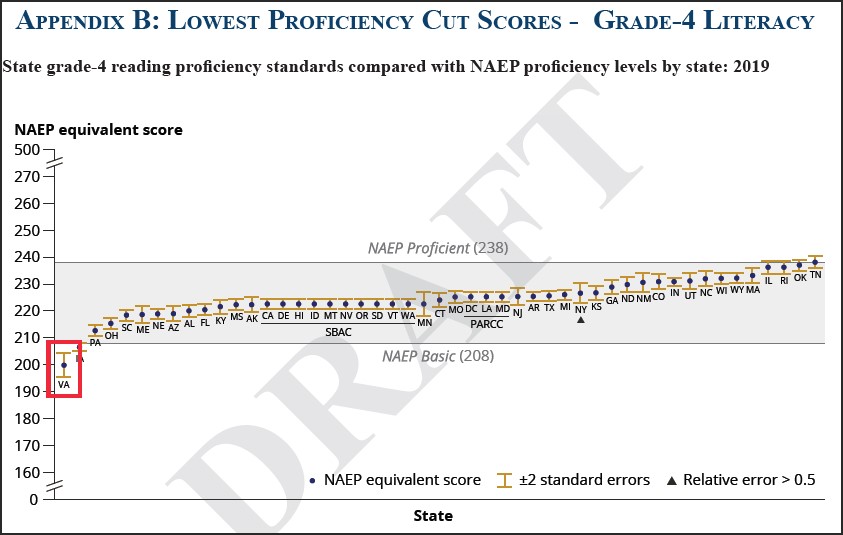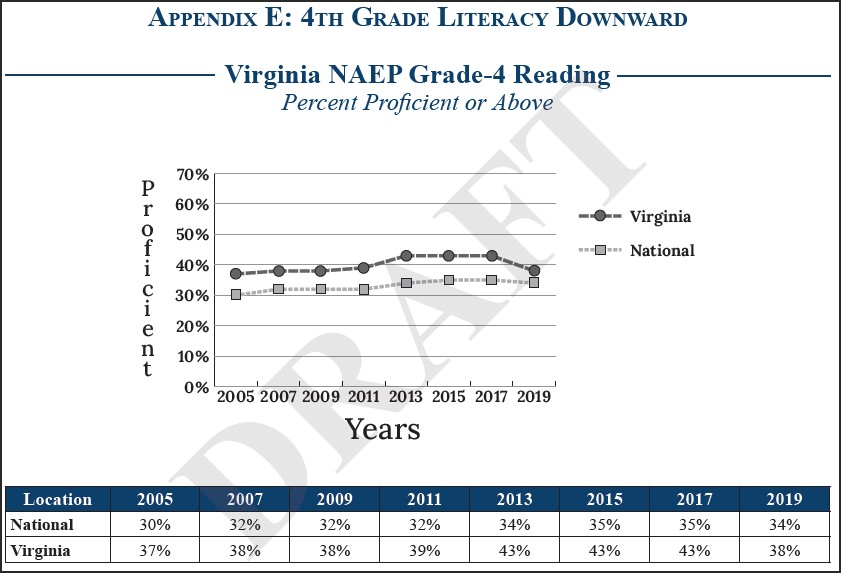by James A. Bacon
Rumor has it that the devil has canceled his natural gas account, shut down the fiery furnaces of Hades, and installed air conditioning. In other words, hell has frozen over. Amidst the proliferating signs and wonders signaling the possible end of times, none is more startling than The Washington Post editorial endorsement of the Republican Youngkin administration’s recent report on the perilous condition of Virginia’s public schools.
The report “documented a years-long trend of declining student performance and glaring racial, ethnic and income achievement gaps that have been hidden from public view,” states the Post piece. The editorial writer dismissed criticism coming from “Democrats and their allies in the teachers union,” and even blew off an analysis by the Post’s own “news” reporters that highlighted a narrow flaw in the report.
Democrats did not respond well to the implication that the quality of public schools in Virginia suffered immensely on their watch and that, for all their preoccupation with “equity,” the educational achievement gap between Asians and Whites on the one hand and Blacks and Hispanics on the other has gotten worse, not better, in recent years. Critics latched on to one particular point — the perils of comparing state Standards of Learning test results with the National Assessment of Educational Progress (NAEP) — by which they hoped to discredit the entire body of evidence in the report.
The report made much of what has been called the “honesty gap,” the gap in the percentage of students showing reading “proficiency” in state and national standardized tests. “Only 38% of Virginia fourth graders and 33% of eighth graders were proficient in reading on the 2019 NAEP, compared to 75% and 76%, respectively, on the 2019 state fourth- and eighth-grade SOL reading tests,” stated the report. As the Post reporters pointed out, that statement reflected confusion over differing definitions of “proficient.” Virginia’s definition of “proficient” is roughly equivalent to NAEP’s definition of “basic.” In truth, the Post news article contended, SOL and NAEP show very similar levels of academic achievement.
I have looked into this, and I find this narrow criticism to be valid. It is also tangential. The “honesty gap” may be central to the Youngkin administration’s rhetorical presentation of the findings, but it is not a substantive part of its factual indictment.
What remains undisputed is that the rigor of Virginia’s standardized tests, when mapped over to the NAEP and compared to those of all the other 50 states and Washington, D.C. is the lowest in the country. When standards lapsed, Team Youngkin argues, performance declined.

After Virginia began lowering standards in 2017, the percentage of Virginia students scoring proficient (using the NAEP’s definition of proficient) declined notably in 2019. In 2017, the percentage of Virginia students scoring proficient exceeded the national percentage by 8 percentage points. By 2019, they exceeded the national average by only 4 percentage points.
Many critics have misrepresented the Youngkin report as saying that Virginia’s public schools are terrible, and have countered with the fact that compared to students in other states, Virginia students still scored above the national average in the 2019 NAEP assessment.
To borrow a coinage from Virginia Department of Education spokesman Charles Pyle, this framing of the issue is “a straw man holding a red herring.”
The Youngkin report repeatedly acknowledges the superiority of Virginia’s public schools before 2017, which it credits to policies pursued by both Democrats and Republicans, but highlights worrisome signs that the school system has been heading in the wrong direction. The report points to declines in Virginia’s own SOL pass rates, to declines in NAEP pass rates, to early-grade literacy assessments, and to college readiness metrics such as SAT scores. Also, the report highlights the growing racial achievement gap. Critics have tried downplaying this finding as old news. What they ignore is that the gap has gotten worse.
“Progressive” Democrats are furious because the report discredits the philosophy that has dominated Virginia educational policy since 2017: that public schools are systemically racist — a system designed by Whites for the benefit of Whites — and that the solution is to pursue “equity” by engineering equal group outcomes. That philosophy, both before and during the COVID pandemic, has proven to be a spectacular failure. But adherents are dug in. They are more dedicated to their ideology than they are to the well being of the minorities they profess to care about.




